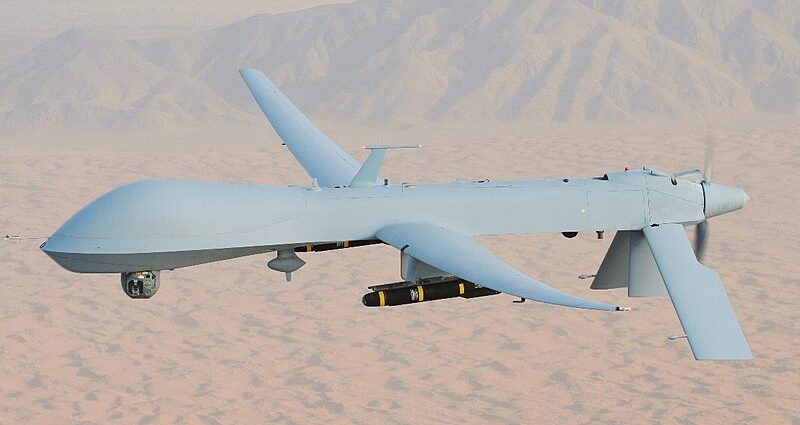The U.S. Army’s upcoming budget presents significant opportunities for defense contractors, as the military gears up to transform its capabilities by heavily investing in drones and electronic warfare systems. The rapid evolution of battlefield threats—driven by emerging technologies like unmanned aerial systems (UAS) and electronic countermeasures—has led to an increased focus on developing high-tech solutions that will provide the Army with a strategic advantage in future conflicts. This new direction not only emphasizes the importance of drones and electronic warfare but also presents a lucrative opportunity for defense companies to align their innovations and marketing strategies with the Army’s needs.
As large-scale conflicts become more technologically complex, the Army is taking proactive steps to modernize its force structure. These investments, detailed in the 2024 budget proposal, aim to equip the Army with the advanced tools required to counter sophisticated adversaries. For suppliers in the defense sector, this opens a new landscape of opportunity, with vast potential for those capable of delivering cutting-edge solutions in unmanned systems, electronic warfare (EW), and integrated defense systems.
The Future of Warfare: Drones Take Center Stage
Drones, or unmanned aerial systems (UAS), have become a game-changer in modern warfare. The U.S. Army is focusing on integrating more advanced drone systems into its force structure, capable of performing a variety of roles ranging from surveillance to strike missions. For defense companies, this creates a massive opportunity to partner with the military on drone development and production.
The Army’s increased budget allocation towards drones signals its intent to leverage these technologies to increase operational efficiency and battlefield effectiveness. The rise of swarm drone technology, which uses artificial intelligence to coordinate multiple UAVs in real-time, is one of the focal points for future investment. These systems offer enhanced capabilities such as precision targeting, rapid deployment, and intelligence gathering, making them indispensable tools for both offensive and defensive operations.
Future suppliers who can develop scalable, modular drone platforms with advanced AI and machine learning algorithms will be well-positioned to capitalize on the Army’s growing demand for UAS. The demand for multi-mission drones—those capable of surveillance, reconnaissance, and lethal strike operations—is particularly strong, providing ample room for suppliers to innovate and offer customized solutions.
Opportunities in Electronic Warfare
Alongside its investment in drones, the U.S. Army is placing a major emphasis on electronic warfare (EW). EW capabilities are critical to countering modern adversaries who rely heavily on electronic communication, radar, and navigation systems. In conflicts where control over the electromagnetic spectrum is key, the Army recognizes that it must invest in systems that can detect, disrupt, and exploit enemy signals.
Defense companies that specialize in electronic countermeasures, signal jamming, and electromagnetic spectrum monitoring will find significant opportunities to contribute to the Army’s evolving EW toolkit. In particular, there is a growing need for systems that can operate in contested environments where adversaries use advanced electronic defenses to block signals and disrupt operations.
The development of systems that can perform both offensive and defensive EW functions will be highly valuable. Offensive EW systems, designed to degrade or neutralize enemy communications and radar systems, are becoming increasingly essential as adversaries invest in their own counter-EW technologies. On the other hand, defensive EW systems that protect U.S. forces from enemy jamming and electronic disruption are equally critical to maintaining operational superiority.
For suppliers, this opens up opportunities to design integrated EW platforms that can be deployed across different units and battlefield environments. Whether it’s through ground-based electronic warfare systems or airborne platforms equipped with sophisticated jamming technology, suppliers who focus on multi-functional EW systems will be in high demand.
Artificial Intelligence and Cybersecurity Integration
As the Army modernizes its force structure, the integration of artificial intelligence (AI) and machine learning into both drone and EW systems will be key. Future conflicts will increasingly rely on autonomous systems that can make decisions in real-time, minimizing the need for human intervention. AI-powered systems, particularly in EW, can detect anomalies, adapt to changing signals, and execute jamming operations with far greater speed and accuracy than traditional human-operated systems.
Defense companies that are able to incorporate AI into their systems will not only meet the Army’s immediate needs but also future-proof their products for long-term use. For example, AI can be used to detect patterns in enemy communications, predict attacks, and even identify weaknesses in an adversary’s electronic defenses. Integrating AI will also improve cybersecurity, ensuring that both UAS and EW platforms remain secure against hacking and other forms of cyber intrusion.
The Army’s future defense architecture will also require a robust cybersecurity framework to protect against increasingly sophisticated cyber threats. Contractors specializing in securing drone communication networks, preventing signal interference, and ensuring the integrity of critical battlefield data will find an ever-growing role in the Army’s procurement strategy. Suppliers with expertise in cyber-defense can offer innovative solutions to safeguard these new technologies, offering a dual-service by ensuring both the efficacy and protection of electronic systems.
Logistics and Maintenance: A Key Component for Defense Suppliers
Beyond the initial development and procurement of advanced drones and EW systems, there is also an opportunity for defense contractors to engage in long-term partnerships with the U.S. Army through maintenance and logistics contracts. As the Army expands its reliance on drones and electronic systems, it will need suppliers who can provide continuous maintenance, upgrades, and logistical support.
Suppliers that offer comprehensive lifecycle management solutions, including software updates, hardware maintenance, and real-time troubleshooting services, will be seen as valuable partners. The Army’s desire for a reliable supply chain, particularly for sophisticated systems like UAS and EW platforms, means that defense companies capable of providing end-to-end support—beyond just the initial sale—will have an edge in securing long-term contracts.
Potential procurement projects include:
| Procurement Program | Expected Date | Estimated Budget | Details |
|---|
| Drones & Electronic Warfare Investments | FY2024 | $7.4 billion | Focus on increasing drone capabilities, electronic warfare systems, and cybersecurity enhancements. |
| Army Future Attack Reconnaissance Aircraft | 2025 | $4.8 billion | Replacing aging scout helicopters with advanced, AI-powered autonomous systems. |
| Joint All-Domain Command and Control (JADC2) | 2026 | $10 billion | Developing a network that connects military assets across land, air, sea, space, and cyberspace. |
| Integrated Air and Missile Defense (IAMD) | FY2025-2026 | $3.5 billion | Modernizing defense against ballistic and hypersonic missiles with advanced radar and EW capabilities. |
| Next-Generation Combat Vehicles (NGCV) | FY2025 | $6 billion | Replacement of Bradley fighting vehicles with AI-assisted combat vehicles for future warfare. |
| Next-Generation Squad Weapon Program | 2024 | $2.7 billion | Developing advanced rifles and ammunition to replace the M4 carbine and M249 SAW. |
| Future Long Range Assault Aircraft (FLRAA) | 2026 | $7 billion | Replacing the Black Hawk helicopter with faster, longer-range aircraft for assault missions. |
| Hypersonic Weapons Development | 2026 | $5 billion | Focus on developing offensive and defensive hypersonic missile capabilities. |
| Advanced Artillery Systems | 2025 | $4 billion | Upgrading current artillery with longer-range, precision-guided munitions. |
| Soldier Lethality Systems | FY2025 | $3.1 billion | Enhancing soldier equipment with integrated optics, sensors, and AI for improved combat efficiency. |
Collaborating with the U.S. Military: Strategies for Defense Companies
Given the Army’s renewed focus on advanced technology in its next budget, defense companies aiming to sell to the U.S. military must adopt strategic approaches to successfully penetrate this market. Developing products aligned with the Army’s strategic objectives, particularly those detailed in the 2024 budget, will be key to building successful partnerships.
Here are several ways companies can optimize their efforts:
- Invest in R&D for Next-Generation Technologies: Companies must prioritize research and development (R&D) in areas such as AI-driven drones, autonomous systems, multi-mission UAS, and advanced EW platforms. Staying ahead of technological trends will ensure that their products are relevant to the Army’s future needs.
- Strengthen Cybersecurity Capabilities: With the Army placing increased importance on cybersecurity, suppliers need to incorporate robust security features into their systems. Collaborating with cybersecurity experts or developing in-house capabilities will enhance product offerings.
- Foster Government Relationships: Building strong relationships with U.S. Army decision-makers, through both direct and indirect channels, can significantly impact contract success. Participation in industry conferences, government workshops, and military exhibitions provides opportunities to network and showcase capabilities.
- Offer End-to-End Solutions: Companies that can offer comprehensive lifecycle management solutions—including logistics, software updates, and on-site support—will be more attractive partners for long-term contracts.
- Adapt to Agile Procurement: As the Army looks to modernize quickly, defense companies should adopt agile development methodologies to ensure faster delivery times and the ability to respond to changing requirements during production.
Conclusion
The U.S. Army’s new budget, with its heavy focus on drones and electronic warfare, presents unprecedented opportunities for defense contractors. Large companies with the capabilities to develop cutting-edge UAS and EW systems will find ample room to expand their business, particularly if they can align their offerings with the Army’s strategic objectives. By focusing on AI integration, multi-mission versatility, and cybersecurity, defense suppliers can position themselves as key players in the military’s modernization efforts, ensuring long-term success in this evolving defense landscape.


Comments are closed, but trackbacks and pingbacks are open.